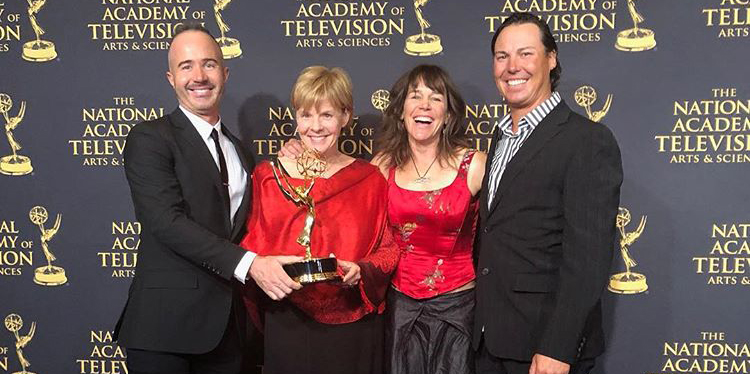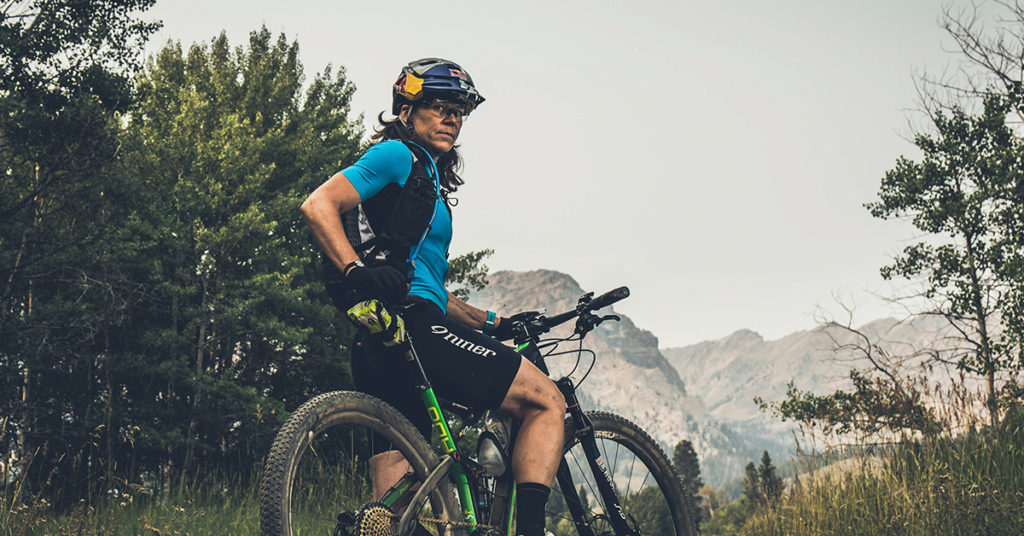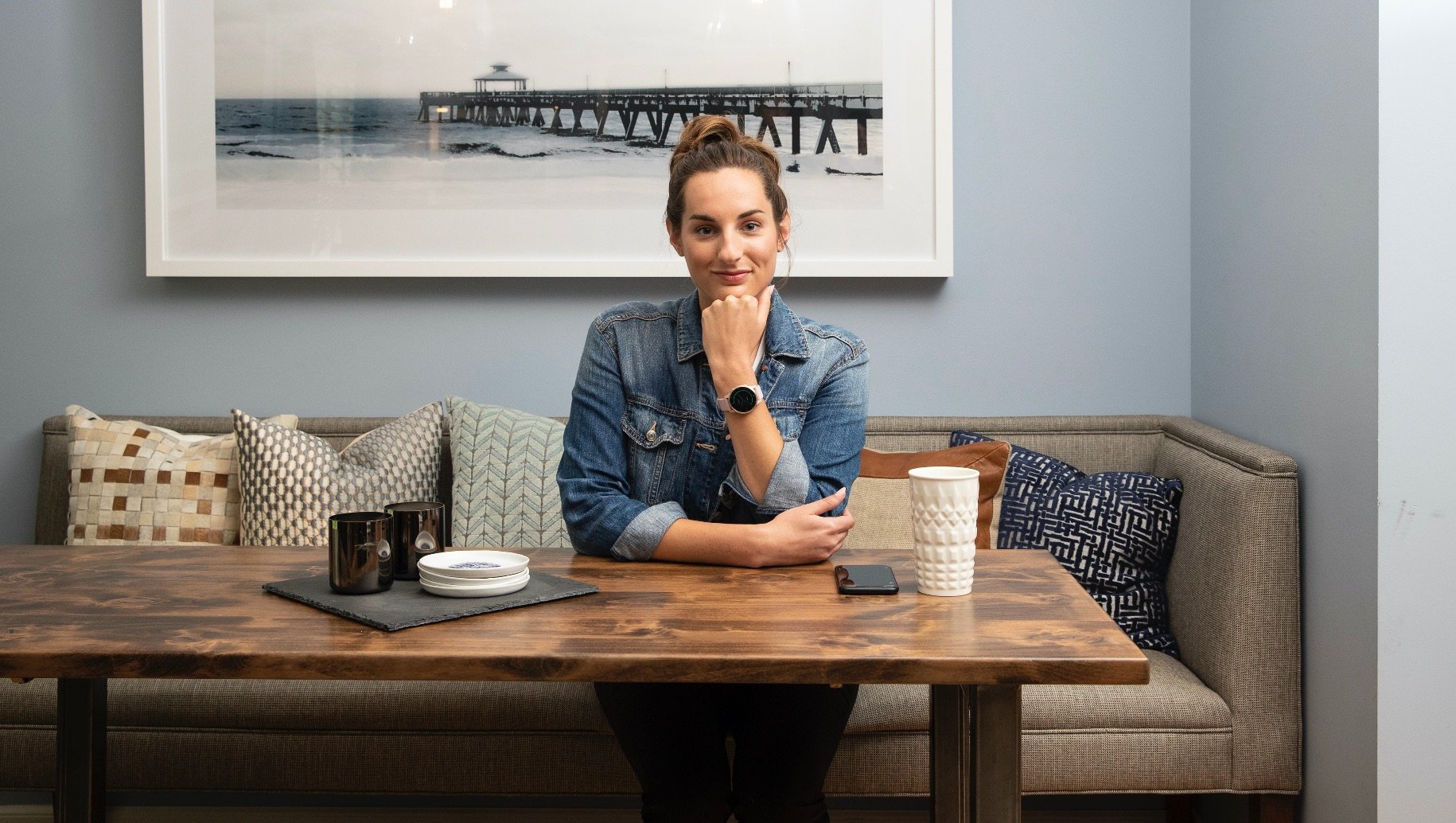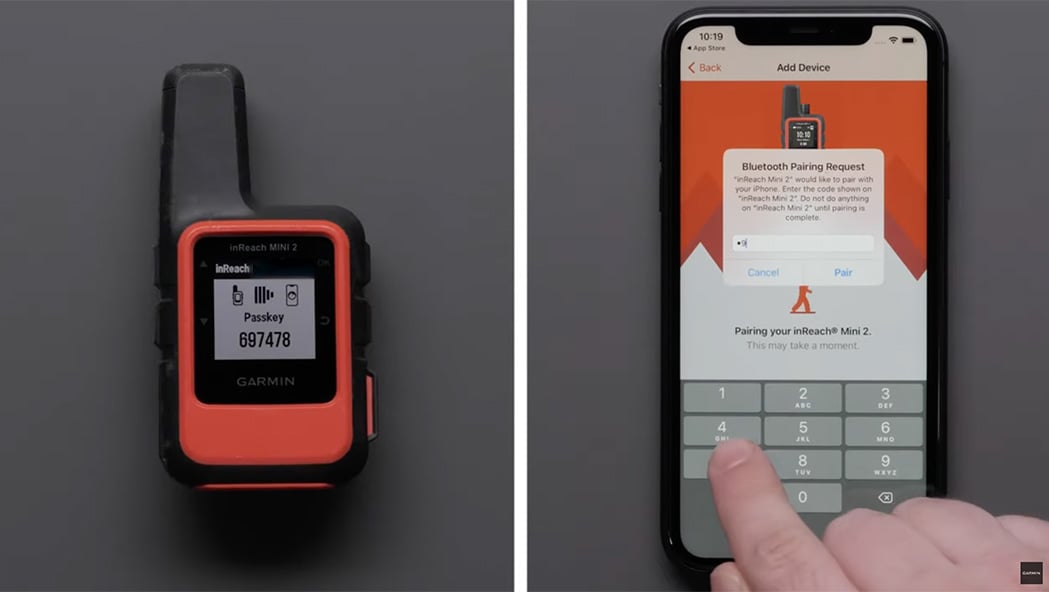
Rebecca Rusch: Sponsored Athlete and Emmy Winner
Rebecca Rusch is a professional athlete, seven time World Champion, and now an Emmy award winner. One of her recent projects, Blood Road, is a documentary of her personal journey of healing and self-discovery. Rusch and her Vietnamese riding partner pedaled 1,200 miles to reach the site where her father, a pilot in the U.S. Air Force, was shot down during the Vietnam War. Her goal was to reach the crash site and final resting place of her father, while pushing her body to the limit and learning more about the historic “Blood Road” she rode to get there. We asked Rebecca some questions to get her take on this personal journey and winning this prestigious award.
Q: First off, congrats on Blood Road bringing in some bling in the film world. How did taking the stage for an artistic award compare to being on the podium as an athlete?
RR: This Emmy for Blood Road is a very different kind of award than my typical sports podiums. Even though Blood Road was my personal story and it was a beautiful story, there were so many other people who had to lend their expertise to actually bring it to life. Once I rode the trail, almost everything else with the post production was out of my hands. So unlike a race that I’m focused on and there is a very clear path to the finish line with a clear winner, an artistic project is nothing like that. The Emmy for Blood Road is more rewarding because this project encompassed so much more than the ride and there really isn’t a finish line yet. Being able to have the story captured forever and being able to share it as a tool for healing and creating change is such a powerful journey that continues. I’m really proud of what we were able to do as a team with Red Bull Media House and this project really was life changing.
Q: How was Garmin technology involved with the preparations and filming for Blood Road?
RR: Garmin was absolutely essential for the planning and execution of Blood Road. Our cartographer, historian and motorcycle guide Don Duvall has spent 10 years riding and mapping the country of Laos. He knows the trails there better than anyone in the world. He’s a devoted user of Garmin products and uses Garmin Basecamp and the Montana on all of his motorcycle scouting and planning. Our film team with Director Nicholas Schrunk used these extensively for the multiple scout missions, and the filming. We were on the trail over a month and our Garmin products were the only way the cycling team, film crew and support crew in vehicles knew how to find each other.
Q: Which was more impactful for you — the physical or mental journey of riding 1,200 miles on the Ho Chi Minh Trail to seek your father’s crash site?
RR: This expedition was by far the most ambitious undertaking of my career. It was the longest and most complicated expedition of my life. I had to rely on all the skills I’ve built over decades of being an outdoor athlete. However, the physical aspect wasn’t the hardest part for me because it was familiar. I’m used to being tired, hungry, and physically challenged for days and weeks at a time. I’ve trained for that type of challenge my whole life. What I’m not trained for, is being emotionally vulnerable. This was new territory and I had to let go of my inhibitions. I think riding so far to get to my Dad’s crash site was an essential part of being physically fatigued so that I could let my defenses down and really experience the emotional journey as well.

Q: As one of the athletes featured in our Women of Adventure series, you’ve been using our products for many years. What was the first product you owned?
RR: My very first Garmin product was the yellow Etrex handheld GPS. My adventure racing team started using them in 2002 for the Raid Gauloises in Vietnam. This was the first adventure race where they allowed GPS units instead of a traditional paper map and compass. We were all so excited to learn to use them and the Etrex became a staple navigational tool for our team and my future adventures. I still use an Etrex 35 Touch for my bike packing expeditions. Next up was the first models of the Forerunner watches, then when the cycling computers came onto the scene I was an early adopter there with the Edge units. For my ride down the Ho Chi Minh Trail, I was riding with an Etrex and an Edge 1000. My current favorite Garmin products are the Edge 1030, inReach mini and Fenix 5S.
Q: Between screenings for Blood Road, travel for races and hosting Rebecca’s Private Idaho events, you don’t have much downtime. How do you find time to train and remain a competitive athlete?
RR: Completing a big expedition like the Ho Chi Minh Trail and then the added work of being part of the production of a film and then a film tour to share the story was a mountain of work. This definitely cut into my training time and really made me work to prioritize my time and be efficient. Being on film tour really highlighted how essential time outdoors is for me. When that gets taken away, I’m not a happy person, so I’ve learned to schedule and prioritize my own time for training, even if it’s only an hour a day. I also make a point of scheduling work at home more often and also launching camps like Rusch Academy where my job is to ride. Signing up for events is also another way that I stay accountable to my training.
Q: You’re literally unmatched in the category of endurance athletes and adventurers. What do you attribute that to?
RR: I’ve been an endurance athlete for decades in multiple sports and I attribute that to charting my own path and following my own trail map. The course is always changing but I have always followed some core principles and that has guided me very well. Being able to change and pivot is an important part of staying in the game.
Q: You use Garmin gear on and off the bike. What are some of the ways you use the inReach satellite communicator?
RR: The inReach mini has become one of my most essential pieces of equipment for backcountry skiing, bike expeditions, climbing, hiking and pretty much anything I do in the backcountry. Most of my time outdoors is spent away from cell phone coverage, so this devices has become an essential safety and communication tool for me in Idaho, Laos and everywhere in between. It’s also really great for friends and family to be able to track my rides and see where I’m going.
Q: Garmin has a brand promise that our products are engineered on the inside for life on the outside. How does that fit with your personal brand?
RR: This type of mantra aligns with my personal goals to explore the physical world as a way to grow internally as a person. I’m always evolving and learning on each endurance ride or outdoor experience. This is precisely why when people ask when I will retire from exploring…the answer is never, because this is part of who I am and how I learn and grow.
Q: What’s the next big race, adventure or advocacy effort on your radar?
RR: I have so much that I still want to do. My riding focus is geared toward expeditions and long distance events. There are more historic, famous trails that I want to explore like the Lewis and Clark Trail. I will continue to focus my bike packing and riding in the US with a message of protecting public lands. I’m heading to Laos again soon for my annual MTBLAO trip where I take riders to experience part of the Ho Chi Minh Trail and also fundraise to clear up the bombs still left in Laos from the Vietnam War. I will continue to focus on expedition and exploratory riding along with using my bike as a vehicle for change. Private Idaho registration will also open again soon and I’m launching more Rusch Academy endurance gravel and MTB camps in Idaho for 2019 as well.




